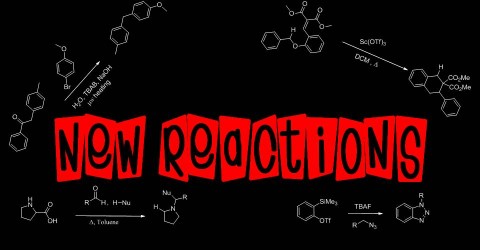
Spicing things up with Cyanogen Bromide…
New UConn Publication
Congratulation to the Fenteany group! They recently published in Synlett regarding a methodology for the preparation of oxazolidinone and tosyl amines using simple tertiary amines to catalyze the reaction! Check it out:
https://www.thieme-connect.com/ejournals/abstract/synlett/doi/10.1055/s-0030-1259561
When life is good…
So those who must not be named are actually cooperating for once. Professor Tilley and I just sent the revisions to our manuscript back to Organic Letters and they were immediately accepted. As for the timetable for publication, next week we will get the proofs back for our manuscript and I will have to literally go word by word and make sure the publishers formatted the document correctly. I can’t believe it’s finally done! I’m very excited to see my name up in the ASAPs and I’ll be sure to post all the information here in the pubs section. I’m also working on some other things with Professor Tilley and a possible collaboration with Professor Leadbeater so stay tuned on new from that lead. So even more good news: my second article, the one that got rejected from Organic and Bimolecular Chemistry has been resubmitted to another journal, Organic Process Research and Development. Hopefully, I will know by the end of the month on the result of that. I’d be pretty happy with two ACS publications in less than a month :P. Now for the kicker. I just finished a project!!! It took roughly about a month of hard work but we will be submitting it to Catalyst Communications either tomorrow or Monday. Again, I’ll be sure to keep you updated on that as well. So now comes the hard part: new projects. I think that’s probably the hardest aspect of any graduate student’s career mostly because of my discussion in an earlier post. Plus you feel a sense of complacence because you are kind of owning science (or at least you think so because you defeated the “evil” reviewers and editors of the journal you have submitted to). But the issue is, you need to be a factory of novel and interesting ideas. Not only that, but you have to step outside your comfort zone and trying experiments whose results are unknown (and most likely filled with failure). But, since you know that the only way to escape the clutches of grad school in a reasonable amount of time is to publish publish publish, you need to constantly be motivated. So, that’s the point I’m at right now. I’m excited to go ahead and pick up a few projects, especially with all the new toys in the lab :P.
However, now that I finally have some (and by that I mean the two to three hours at night before I pass out) time, I’d like to reserve just a little commentary on a discussion I was having with a fellow graduate student tonight. This particular student is a 5th year and, since money is tight with his PI, he is TAing for two organic labs, one of which I am also TAing for. Now I’m not going to rant about my students (I’m sure it’s a pastime ubiquitous throughout the graduate student community.) In fact, so far all the classes I’ve taught ( a grand total of three at uconn and one a semester each year at Stonehill from sophomore year on) are generally really sweet and hard workers. However, they are the exception to the rule in my opinion. The majority of today’s students don’t have a good work ethic….or more accurately, they lack one at all. Maybe it is that I am very much invested in chemistry and science itself, but it seems to me with each passing year students get worse and worse while rules at the high school and even college level get more and more lax to accommodate them. And this grad student and I aren’t the only ones that think so. A story was recently released regarding a teacher, who ironically has a blog, posted about the poor quality of her students. It confirmed many of my observations and I can conclude this is a larger phenomenon than I thought. So I think American students really need to step up their game when it comes to academics. I know our culture today no longer stresses academics and that makes me sad. I feel that, if we are to continue on this path, we will be buried by the advancement of other nations. We need to be the leaders of technology and science and the only way to do that is to have a well-educated, interested student base! Well, that’s enough ranting for one night. I promise the next post will be a review. I’ve seen a couple of articles that really impressed me!…Ckellz…Signing Off…
Benzyne Makes Life More Fun!









